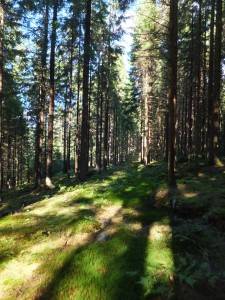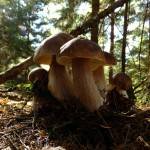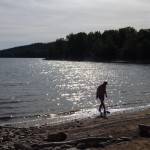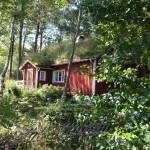Imagine the scene. An idyllically beautiful forest, straight out of a John Bauer painting. Tall pines, the Christmassy scent of fir trees, juniper & lingonberry bushes, the forest floor carpeted with thick mosses of many different colours and species, littered with massive, ancient, lichen covered stones, the silence only broken by the soughing of the wind in the trees, the chirps of the flocks of siskins, the mighty croak of the odd raven or plaintive mew of a passing buzzard. Under a tree you spot a perfect porcini, or Karl Johan – this is Sweden after all – and as you approach you see that it’s not on its own, but surrounded by others of varying ages and sizes. As you crouch, get out your mushroom knife ready to clean off the soil on the base after you’ve picked it, you start counting and realise that there are actually 5, or 10, or even 17 porcini within eyesight. That is svamplycka. Wild mushroom happiness, to give it a direct translation.
 This week we have experienced svamplycka many times over. We have hiked through almost indescribably beautiful forests, framing a gentle bucolic farmland landscape dotted with pretty traditional red, white or yellow wooden houses and generously watered by a multitude of lakes, most of which have bathing areas even if they are used as reservoirs for drinking water. Delicious for a quick dip after a hot slog in the woods! There are many good reasons to come to Sweden, which President Obama has seen for himself on his short visit here this week, but for wild mushroom enthusiasts the biggest attraction has to be the great variety of edible funghi to be found in the forests here, and in such profusion. Genuine svamplycka!
This week we have experienced svamplycka many times over. We have hiked through almost indescribably beautiful forests, framing a gentle bucolic farmland landscape dotted with pretty traditional red, white or yellow wooden houses and generously watered by a multitude of lakes, most of which have bathing areas even if they are used as reservoirs for drinking water. Delicious for a quick dip after a hot slog in the woods! There are many good reasons to come to Sweden, which President Obama has seen for himself on his short visit here this week, but for wild mushroom enthusiasts the biggest attraction has to be the great variety of edible funghi to be found in the forests here, and in such profusion. Genuine svamplycka!




